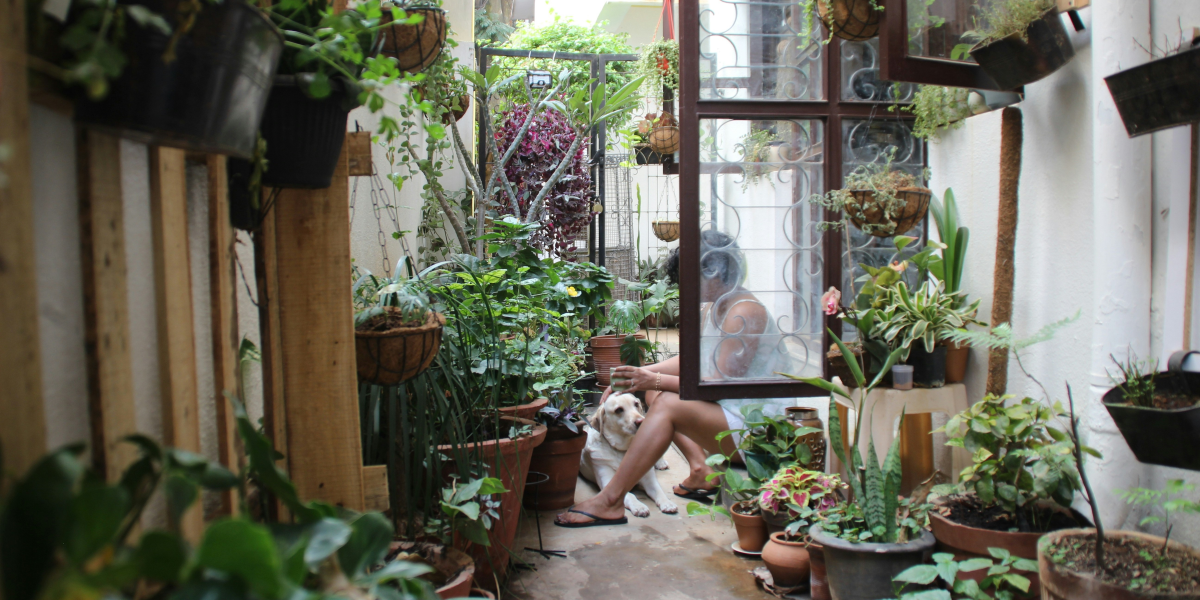By: Joshua Finley
Gardening in urban surroundings is challenging. You can bring greenery and fresh produce to any city apartment with the right guidance. Whether you have a small window or an entire room, this guide will provide great tips and strategies for indoor gardening.
Indoor gardening has many benefits. It can reduce carbon dioxide, increase oxygen production, and improve air quality. It can also help lower stress and brighten your mood—ideal for busy urban homes.
Are you looking for fresh produce but can’t find any? Trying to bring life to your apartment? Grow your plants by following this ultimate guide to indoor gardening:
1. Grow the Right Plants
Choose plants that don’t need heavy maintenance and grow easily in tight spaces. Different plants need more sunlight and humidity as opposed to others. Consider starting with these easy-to-grow plants:
- Herbs: City dwellers with limited space can consider growing basil, parsley, thyme, and mint. Pots are good for them, and even a windowsill or countertop will do!
- Leafy Greens: Lettuce, spinach, and arugula are easy to grow and can thrive indoors.
- Succulents and Cacti: Succulents don’t need much to stay alive in a dry environment. For city dwellers with busy lives, they are low maintenance and perfect.
- Houseplants: Peace lilies, pothos, and snake plants are all popular indoor houseplants that will flourish with low light and need minimal care.
2. Use your Space
Gardening in a small space seems impossible, but this is where your creative mind can take over. Plants fit anywhere, including in your home, with vertical gardening. If you have a big floor area, you could put plants upward, freeing up floor space.
Repurpose furniture such as bookshelves or kitchen racks to optimize space. If you know the right containers, like hanging pots or multi-tiered plant stands, you can turn any area into a garden.
3. Understand Light and Water Requirements
To help your plants grow, understand the type of light that it needs. If your apartment has no source of natural light, consider buying grow lights to nourish the plant’s needs.
The common mistake is overwatering since plants in containers continue to retain moisture for longer. For most indoor plants, a good rule of thumb is to allow the soil to dry out between watering.
4. Soil and Fertilization
Indoor gardening relies on the use of the proper soil. A high-quality potting mix or coco peat will ensure that your indoor plants absorb enough water (i.e., recover from wilting) and drain the rest.
Do not forget to fertilize the plants because they need nutrients for growth. All-purpose, water-soluble fertilizer is what you should choose, and follow the right feeding schedule for each plant variety. Routine fertilization is important, so remember to fertilize the plants once in the spring and throughout the fall.
5. Create the Ideal Environment
Humidity is an absolute plant killer. Indoor growing plants need apt temperature control. Consider investing in a humidifier or using a diffuser (mist bottles) with water for your plants regularly. Grouping plants with similar needs can also level up the humidity from moisture.
Many indoor plants don’t like being warmed too much; they prefer a consistent temperature of between 60° and 75° F (15° to 24° C), so don’t put them in a spot near drafts, radiators, or where air conditioning is turned up.
6. Upkeep and Maintenance
To keep your indoor garden healthy, you’ll need to take extra care of your plants. Pruning dead or yellowing leaves is a sign that you are overwatering your plants. This can also cause root rot in your indoor plants. Pests like spider mites and aphids can harm your indoor plants as well.
If infested with pests, use organic Azadirachta pesticide or wash the leaves of the plants with dishwashing detergent and water. The plants will also need to be repotted when they outgrow their pots. As a general rule, you should repot every 1-2 years (or when you see that the roots are pot-bound).
7. Harvesting and Enjoying Your Garden
The joy of indoor gardening lies in being able to harvest herbs, vegetables, and fruits fresh. Cut-off herbs like basil, parsley, and mint are fine as long as we only take a couple of leaves at a time as the plant continues to thrive.
You can pick the outer leaves and let the centre of lettuce or spinach grow. Growing your own food in the city can be rewarding, and where outdoor access to fresh produce is often limited or expensive, it’s great to have a steady supply of fresh ingredients growing right in your own home.
8. Working with Block Management Companies
Gardening in an apartment complex or a high-rise building in a city is difficult. If you are living in a group of buildings and want to know about any restrictions on indoor gardening, reach out to a block management company in Essex.
Some companies allow balcony or roof gardening, if not in the indoor space. It is safer if you ask about the rules involving drainage, plant maintenance, or planters for worry-free gardening in the future.
9. Enhancing Your Space with Tar and Chip Surfacing
If you have access to an outdoor space or a balcony, add tar and chip surfacing to their area. Tar and chip surfacings are flexible and environmentally friendly. They are also cost-effective and functional and offer a flair of style for an outdoor area that can complement your indoor garden.
To offer cost-effective urban solutions, tar and chip surfacing is ideal whether you wish to establish a small garden area or seating space. Consider bringing a splash of color to your outdoors with tar and chip surfacing.
Why Should You Consider Indoor Gardening?
Indoor gardening is soothing and relaxing for your home. With the right plants, selection of space, and optimum growing conditions, even in small spaces, one can achieve a beautiful indoor garden.
For city dwellers, this is a perfect way to take nature indoors with indoor gardening, which can give a peaceful and vibrant atmosphere in your apartments. Happy gardening!
Published by Mark V.





